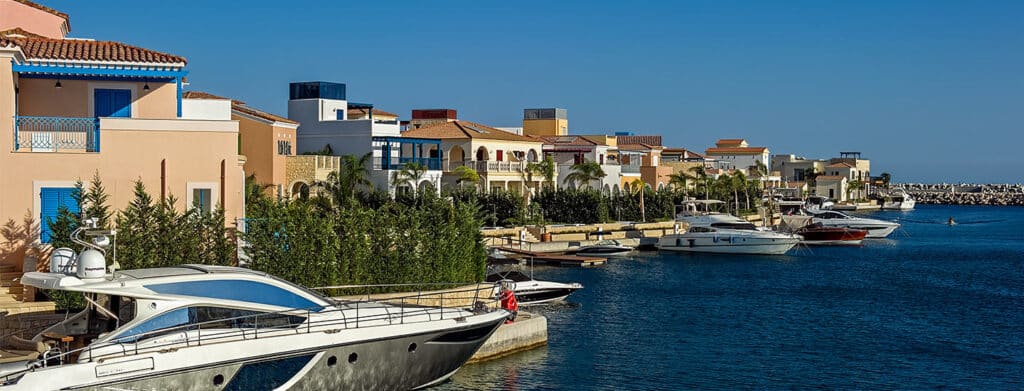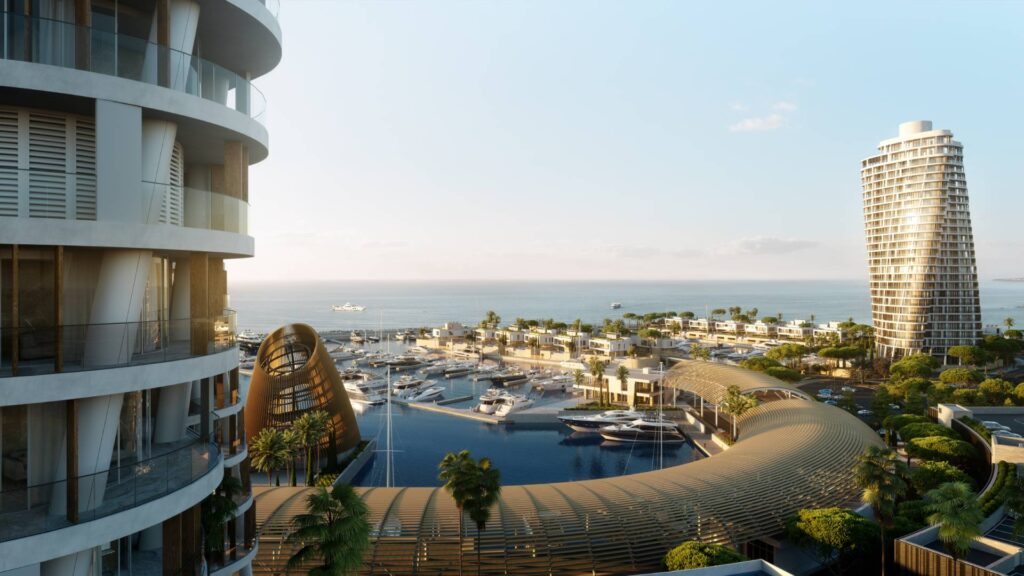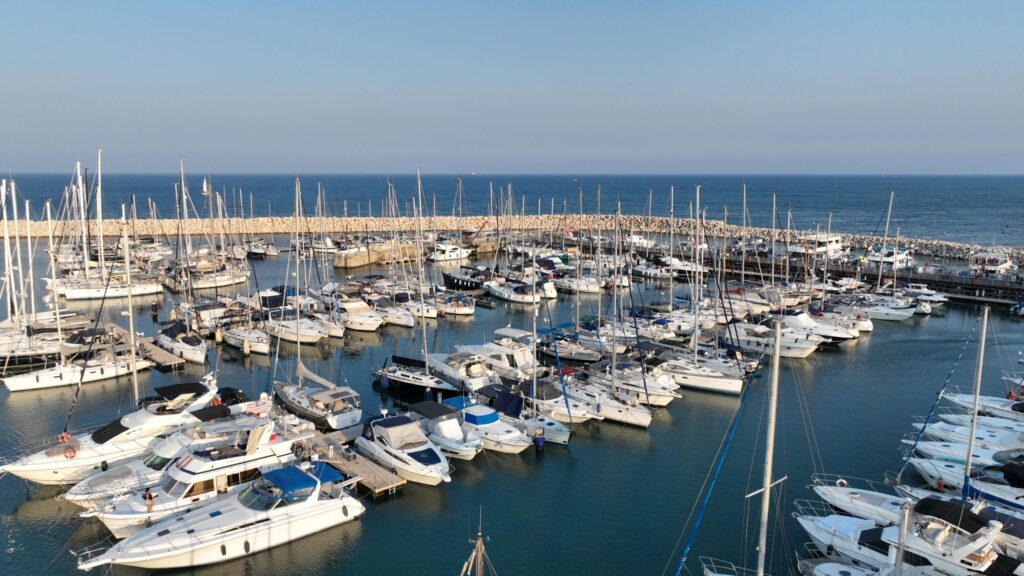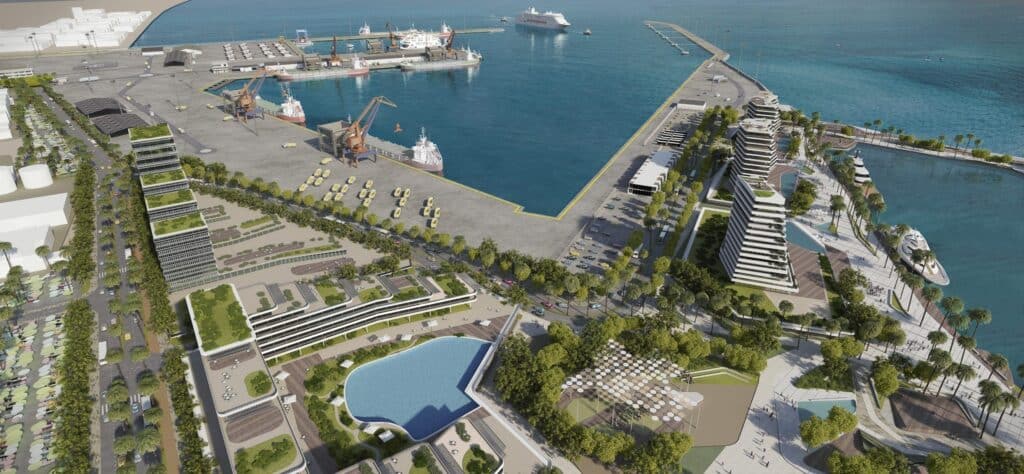But are they finally in a safe harbour?
Ports have long been a crucial feature of Cyprus’ economy for obvious reasons, but the recent coating of the island’s coastline with high-end marinas is a riskier way to spur investment and attract the wealthy.
The marina project has been littered with failed plans, collapsed consortiums and endless wrangles over tenders, but is Cyprus now finally turning the corner?
Limassol, the island’s main hub for commercial and cargo shipping, also boasts the most visited marina in the country.
Built in 2010 on the old Limassol port’s premises and located just a short walk from the heart of the city, the marina has berthing facilities for 650 boats of various sizes. The quays range from eight metres up to 115 metres, with their depth varying from 3.5 to nine metres.
It also features a repair and maintenance shed served by a 100-ton winch, a 40-ton tug and fixed surface.
In June, the marina was awarded by the energy ministry for its contribution to the Cypriot economy. Since its establishment, it has concluded contracts on residences overlooking the marina in excess of €500 million and sold properties to people from over 48 nationalities. Until now the facility has welcomed and handled more than 9,000 yachts and 300 unique superyachts.

Moreover, last week the marina and port management welcomed a proposal tabled by Frederick University regarding the electrification of berthing activities, as part of the city’s commitment to reduce its environmental footprint.
The proposal essentially envisions the use of electrical outlets to allow marine vessels, from cruise ships to container ships to tugboats, to plug into green electric power while at the dock to eliminate the need to run diesel engines while at berth.
Electrification is expected to play a key role in the industry’s decarbonisation as it represents great opportunities for all industry segments to reduce berth emissions and improve the air quality in port areas.
“The planning of ship electrification at the Limassol marina and port must commence as soon as possible to effectively comply with the rules outlined in the relevant European directives on sustainability,” Angelos Menelaou, head of the department of shipping and trade at Frederick University told the Cyprus Mail.
“The environmental benefits of such a development will be highly significant, and it is imperative that all relevant stakeholders collaborate to conduct the necessary economic and technical study, considering the complexity of such a project.”
At the Ayia Napa marina development plans are still underway. However, the ambition to turn it into the “jewel of the Mediterranean”, as former Transport Minister Yiannis Karousos envisioned when it was inaugurated, was hit hard by the Covid-19 pandemic.
“The effects of the pandemic have hit us hard,” the chief marina officer Costas Fititris said. “Development plans were halted and delayed, and we are just getting back on track.”

The Ayia Napa marina’s wet slips can accommodate 360 yachts up to 110 metres in length, the dry stack storage facility is available for 160 small boats up to 10 metres in length and the dry dock area is available for 80 boats.
In addition to that, the basin has depths of 3.5 to seven metres to accommodate the deep drafts of sailing boats and super yachts.
Private housing at the marina is also one of its most important features, though they are not yet complete. Ultimately, two towers will accommodate a total of 220 two and three-bedroom apartments. Private villas are also being built, 11 of which on the beach and 12 on an artificial island inside the marina.
However, a general sense of uneasiness as far as the cooperation between the state and the private sector began to creep in among the marina’s offices.
“We need more cooperation between the private and public sectors in order to make Cyprus an even more attractive and friendly destination for investments, as well as a maritime destination,” the marina’s director Stavros Karamondanis said.
He spoke of a lack of incentives, both for potential new investments and for the maritime tourism as a whole, reflected in the marina’s relatively low current number of visitors.
“The upward trend in prices has significantly affected the consumer’s behaviour and especially purchasing power. In addition to that, high energy prices continue to hit everyone.
“That said, the problems underlined by the current economic crisis in Cyprus and in the world are pushing us to find new solutions and the growing number of visitors coming to the island are a positive development for the marina’s future,” he said.
That said, however, the marina is still widely viewed as a costly extravagance and locals are yet to see its benefits for people living in the area.
“It hasn’t brought anything to the local economy,” Marinos Hadjiandreas, the manager of a hotel in Ayia Napa told the Cyprus Mail.
“A few cafes and restaurants cannot justify the enormous cost of the project. It may change in the future, but so far it’s not a major attraction for either visitors, or locals,” he said. The whole project cost around €300 million.

But nearby Pernera is not daunted by the choppy seas ahead. The Paralimni marina is due to be completed by 2025.
Banking on an already popular location, overflowing with local and foreign tourists during the summer months, the marina, whose construction began in the spring of 2022, will feature around 300 berths and, similar to other similar ventures on the island, will be both residential and commercial.
However, the new project got off to a rocky start, as only two months ago the audit service slammed the environment department in a report, accusing it of not doing everything it could over the jetty construction at the Paralimni marina.
The findings detailed that the construction failed to adhere to provisions set out by the environment department and subsequently collapsed, leading to an increase in the leakage of heavy metals.
“Rather than take concrete action before the damage was done, the environment department limited itself to letters, rather than taking drastic measures to ensure the protection of the environment,” the report said.
In Larnaca a marina has existed since 1973, but in recent years has fallen into neglect and disrepair. An extensive, long-planned upgrade complete with residences was stymied for years by endless public consultations, long delayed deadlines and debates and back and forth between the government and private enterprises that eventually pulled out of the project.

The Larnaca marina project finally received the green light from town planning authorities in July 2022 under the umbrella of Kition Ocean Holdings and is due to partially open in the spring of 2024.
Banking on the success of the town’s port, which is now sharing the ferry link to Greece with Limassol, the Larnaca marina has ambitious plans.
“After the foundation stone ceremony, we are planning to immediately start working on the expansion of all major works, which started with the upgrade of the preserved quay, as well as the shaping of the space inside of the port to complete the building and repair of ships and boat storage area,” Elena Petrou Ellina, communication officer at Kition Ocean Holdings, told the Cyprus Mail.
She also added that the growing demand for sustainability was a key element when designing the marina.
“We are well aware and fully compliant with the EU climate law, aiming for carbon neutrality by 2050, so our effort is focused on that direction,” she said.
“Using the latest technological advances, the marina will offer services that require the least amount of energy and will be able to supply power to all yachts, thus minimising their carbon footprint whilst berthed.
“We also aim to improve the quality of the seabed, supporting in various ways the enhancement and improvement of underwater life.”
The marina will have 380 wet berths and 100 dry berths with plans to double its capacity to 600 wet berths and 200 dry berths to satisfy the growing demand.

Furthermore, Petrou confirmed a growing interest in investing in future private properties at the Larnaca marina, especially from abroad.
“There has been an increased interest from buyers from the Middle East and Europe, who expressed their desire to buy and invest in Cyprus and especially in Larnaca,” she said.
“Larnaca is already on the map and many people from neighbouring countries are seeing the investment opportunities they have been looking for. Larnaca needs to become a tourist destination as well as a professional establishment.”
The only town still unaccounted for is Paphos. Like Larnaca, plans for the Paphos marina have been vented for several years and frequently became mired in bitter tender battles, but to no avail as yet.
However in June, the Paphos chamber of commerce’s positions regarding a potential consctruction of a marina in town have been adopted by the deputy ministry of tourism.
“We are now on the same page as the deputy ministry of tourism. This is a positive development,” said the head of the Paphos chamber of commerce George Mais.
He added that the tendering process for the project is set to begin in late 2023 and that the marina, which will feature a hotel, a pier for cruise ships, and private villas and apartments is set to be built in the village of Kissonerga.

